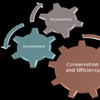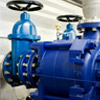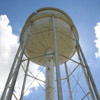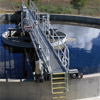Water Conservation Advisory Council
As outlined in Chapter 10 of the Texas Water Code, the purpose of the Water Conservation Advisory Council is to provide the governor, lieutenant governor, speaker of the house of representatives, legislature, TWDB, TCEQ, political subdivisions, and public with the resource of a select council with expertise in water conservation. Duties of the Council include
- monitor trends in water conservation implementation;
- monitor new technologies for possible inclusion by the TWDB as best management practices in the best management practices guide developed by the water conservation implementation task force;
- monitor the effectiveness of the statewide water conservation public awareness program;
- develop and implement a state water management resource library;
- develop and implement a public recognition program for water conservation;
- monitor the implementation of water conservation strategies by water users included in regional water plans; and
- monitor target and goal guidelines for water conservation to be considered by the TWDB and TCEQ.
On December 1 of each even-numbered year, the Council submits to state leadership a report on progress made in water conservation in this state.
Water Conservation Best Management Practices
Best Management Practices (BMPs) are a menu of options for which entities within a water use sector can choose to implement in order to achieve benchmarks and goals through water conservation. Best management practices are voluntary efficiency measures that are intended to save a quantifiable amount of water, either directly or indirectly, and can be implemented within a specified timeframe.
Best Management Practices Implemented by Utilities
Many utilities currently implement a range of best management practices as part of their water conservation program. The table displays utilities and the BMPs they have chosen to implement as reported to TWDB in 2017.
Best Management Practices Guides
Browse the following menu of resources to access complete best management practices guides or to download individual practices.

Understanding Best Management Practices
The best management practices identified in the guides are offered to the state's regional water planning groups, water providers, and water users as a tool for planning and designing effective water conservation programs. During the regional water planning process these practices can be evaluated for potential water savings and cost effectiveness. The objectives of these best management practices is to identify information about the elements of successful conservation programs, good cost estimates, and reliable water savings estimates for use in water resource planning.

Best Management Practices for Agricultural Water Users
Best management practices for agricultural water users are combinations of site-specific management, educational, and physical practices that have proven to be effective and are economical for conserving water. These developed practices focus on helping agricultural producers and irrigation districts to improve water use efficiency. These agricultural best practices provide a means of measuring the success of agricultural water conservation programs, their costs, and schedules of implementation.

Best Management Practices for Commercial and Institutional Water Users
The commercial sectors represent a major component of the Texas economy and our institutions form the backbone of the necessary services to make the economy work. These best management practices and technologies have been identified for the commercial and institutional sectors to help reduce water and wastewater costs while improving water use efficiency. A systematic approach should be used when examining water use and evaluating the application of BMPs.

Best Management Practices for Industrial Water Users
For many industrial water users in Texas, water is an integral part of a product or a process. Best management practices for industrial water users are a combination of proven management and physical practices that a water user can use to achieve efficient and economical conservation of water.

Best Management Practices for Municipal Water Providers
Water supplied by water utilities to serve municipal water customers is driven by a wide variety of domestic, commercial, industrial and institutional needs. It is important that water utilities focus on the efficiency of their supply operations while promoting water efficiency to their customers. Best management practices have been developed for utilities to both improve water use efficiency of their own operations and for programs to improve the efficiency of their customers.

Best Management Practices for Wholesale Water Providers
These best management practices are a resource for wholesale wate rproviders that supply potable water to their wholesale utility customers. Wholesale providers can work in cooperation with their wholesale customers to identify and remove potential disincentives to conservation that are created by water management policies. These practices provide more detail on how a wholesale agency can focus efforts on customer assistance programs, technical assistance and outreach, and incentivized rate structures.